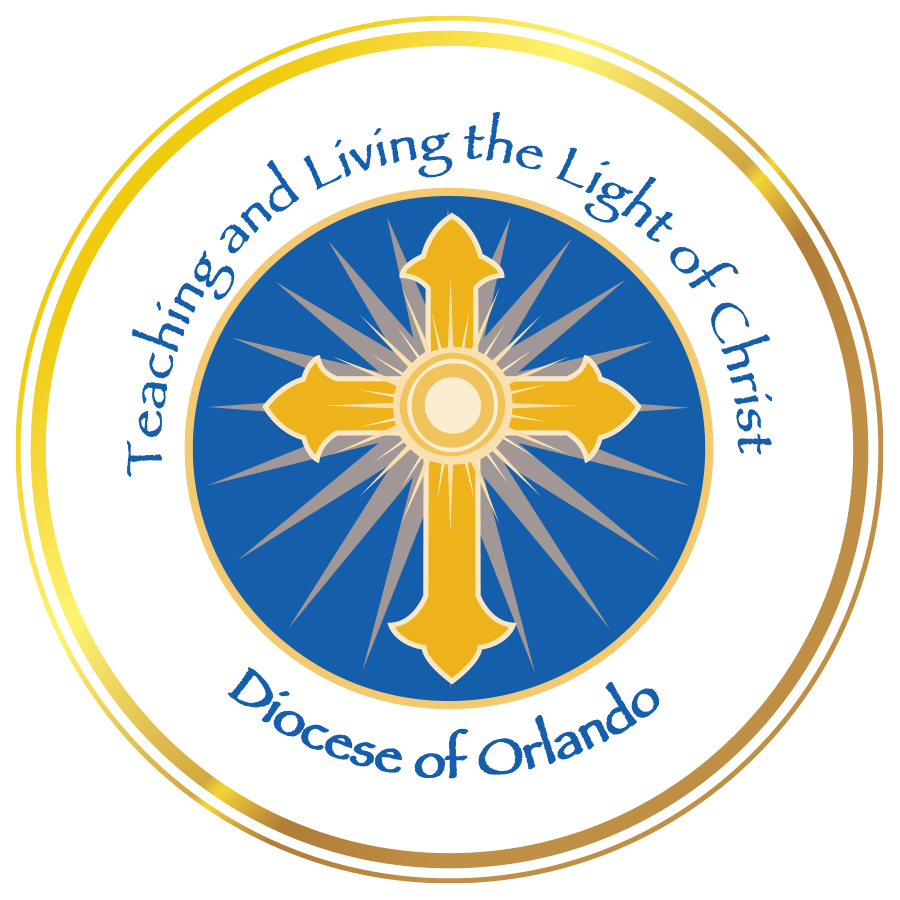During the celebration of the Chrism Mass, the bishop blesses the oils of the catechumens, the sick and Sacred Chrism. The three oils are then distributed to the parishes of the diocese and are used during Sacramental celebrations throughout the year.
Bruce Croteau, director of the Diocese of Orlando Office of Liturgy, said the use of oil stems from the earliest traditions of our faith. In the Old Testament, the use of olive oil is referenced in cooking, as a healing agent, and in the offering of sacrifices. Croteau said it is also important to note that oil was used for setting an individual apart. For example, David was anointed to be king.
The word “anoint” means to literally smear or rub with oil, typically as part of a religious ceremony and represents an outpouring of the Holy Spirit. In Isaiah chapter 61, we read: “The spirit of the Lord GOD is upon me, because the LORD has anointed me.”
Below is an overview of each of the oils blessed at the Chrism Mass and their sacramental significance to the Catholic faith.
Chrism Oil: Of the oils, the Chrism oil is unique in that it is consecrated as sacred. It is mixed with a special perfume, generally balsam, and is breathed upon by the bishop. The word “Chrism” comes from the root word for Christ, which means, “the anointed one of God.”
Most people are anointed with the Chrism oil twice in their lives – at their baptisms and during the Sacrament of Confirmation, when they are sealed with the gifts of the Holy Spirit.
The Sacred Chrism is also used during the Rite of Ordination to the Priesthood, as the bishop anoints the priests hands, and is also used in the blessing of an altar and the walls of a church when a new worship space is dedicated.
“The significance of anointing the altar is a sign of Christ who is victim, priest and altar of his own sacrifice. The altar is not only the place where Christ becomes present in the Eucharistic elements, but carries a much greater significance as the central image of the Church. We also anoint the walls of the church. It is a way of way of saying that holy things are done here… for this is the temple of the Lord,” said Croteau.
Oil of the Catchumen: When adults are preparing for baptism, there is often a rite of anointing that occurs. The anointing with oil symbolizes their need for God’s help and strength as they prepare for baptism.
“It is seen as a means of strengthening catechumens as they deal with the issues that confront them in their lives – sin, temptation, etc. – and become more like Christ,” he said. A similar anointing takes place during infant baptism, he said.
Oil of the Sick: This oil is used during the Sacrament of the Anointing of the Sick. Its Scriptural basis lies within the First Letter of James: “Is anyone among you sick? He should summon the presbyters of the church, and they should pray over him and anoint [him] with oil in the name of the Lord and the prayer of faith will save the sick person, and the Lord will raise him up. If he has committed any sins, he will be forgiven (James 5:14-15).”
Croteau said the Oil of the Sick is seen as an ointment, a means of comfort. “While the symbolism reflects the use of oil as a physical means of healing wounds, the Sacrament is much more of a spiritual healing. Your sins are forgiven in the anointing of the sick,” he said.
Oil not used during the year before the next Chrism Mass is either buried or burned. Croteau said many parishes will soak up the extra oil with cotton or gauze and burn it during the Easter Vigil celebration.
